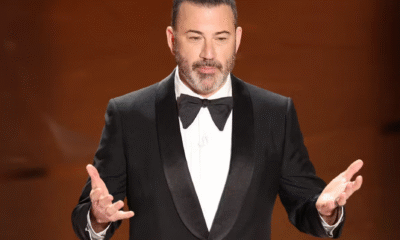Entertainment
Below Deck Med’s Kyle Admits He ‘Doesn’t Trust’ Anyone on the Interior Team on November 7, 2023 at 3:00 am Us Weekly

Bravo (3)
Kyle Viljoen‘s time on Below Deck Mediterranean got more complicated after a fight with Jessika Asai — and that’s just the beginning.
During a new episode of the hit Bravo series, which aired on Monday, November 6, Kyle tried to get Jessika to spend more time on service instead of laundry.
“I know you have second stew experience. Are you confident on service? I am, like, no energy. I have a lot of exhaustion,” he told his fellow stew. “I just think it is fair that you also get to do service too.”
Kyle, who is currently the second stew, brought up the idea of Jessika taking on more responsibility to their boss, Tumi Mhlongo.
“I hate an all-girl [charter guest] group because they do cute, weird s—t that no one likes. I am not mentally and emotionally equipped to be on service. I am going to do housekeeping and I’ll take over for Jess,” he said during a conversation with Tumi.
The chief stew, however, wasn’t on board with the idea, telling the cameras, “Kyle has more experience in service, and depending on how crazy these guests are and what their demands are, I need Kyle’s energy this charter. He can try to run all he wants. He’s not going anywhere.”
Later in the episode, the drama picked up when Kyle said during a group meeting that it was “up to Tumi” whether Jessika could lead service. Tumi laughed at Kyle’s attempt to swap tasks, which Jessika mistook as shade at her skills as a stew.
“Kyle is so shady. He’s trying to put me on the spot in front of Jess so he can get out of service and it’s annoying,” Tumi said in a confessional. “Less than two hours ago we literally had a conversation about him being on service this charter. So cute but try again next week.”
Jessika directly asked Tumi whether her hard work wasn’t being called into question. The duo figured out the misunderstanding but when Tumi mentioned Jessika’s comments to Kyle he was less than thrilled to be caught in the middle.
“So she’s trying to turn the tables here? I have done everything for this girl, and she just wiped the floor with me. To Tumi, my chief stew. How dare you?” Kyle told the cameras. “I’m not friends with anybody. I don’t trust a single f—king soul on this boat.”
The episode ended with Kyle and Jessika going at each other.
“You know what sucks? I was there for you. The fact that you said I made you feel like a green stew? That f—king sucks dude. I was the only one promoting you to be in service,” he noted to Jessika. “What do you mean why is this triggering me? Why would you go to Tumi behind my back and tell her [that]?”
Kyle got emotional remembering how he “had faith” in Jessika. Meanwhile, Tumi found herself at odds with Natalya Scudder after telling Kyle she wouldn’t mind the third stew going home amid issues with her boyfriend.
“Natalya, I would never want someone who is struggling at home to stay on the boat. Ever,” Tumi told Natalya about her comments. “A refresh button does not mean I need to be friends with you. We’re working colleagues.”
She added: “Her feelings are completely valid. It is her tone that f—king aggravates me.”
Natalya, for her part, questioned why Tumi was still privately talking about her. “I’ve done my job, and we’ve been getting along. But apparently, there’s little comments being said that are throwing a little bit of shade,” she fired back. “You’re not a really good leader.”
In a preview for next week’s episode, Jessika and Kyle are both seen crying at different points in the charter. “Everyone is at their breaking point. It could get worse from here,” Tumi tells the cameras before an argument between Kyle and Natalya plays out on screen.
While it is unclear what causes the commotion, Natalya is surprised by how Kyle is speaking to her.
“I’m one of your friends, don’t talk to me like that,” she says after Kyle shades her “f—ked up” life. “Kyle, I’ve never been spoken to like that in my life, and I can’t believe you’re saying this.”
Kyle remains unbothered by his reaction and even smiles as Natalya walks off, adding, “I don’t care. You have been a fake ass bitch talking s—t behind my back since day 1. Get away from me.”
Below Deck Mediterranean airs on Bravo Mondays at 9 p.m. ET.
Bravo (3) Kyle Viljoen‘s time on Below Deck Mediterranean got more complicated after a fight with Jessika Asai — and that’s just the beginning. During a new episode of the hit Bravo series, which aired on Monday, November 6, Kyle tried to get Jessika to spend more time on service instead of laundry. “I know
Us Weekly Read More
Entertainment
California Bans AI Clones from Replacing Real Talent

California just made a dramatic stand for human creativity, defeating the threat of AI actor clones with a sweeping new law that puts people—not algorithms—back in the Hollywood spotlight. With the stroke of Governor Gavin Newsom’s pen in October 2025, the state has sent a clear message to studios, tech companies, and the world: entertainment’s heart belongs to those who create and perform, not to digital facsimiles.
California Draws a Hard Line: No More AI Clones
For months, the entertainment industry has been divided over the use of artificial intelligence in filmmaking. Studios, lured by promises of cost-cutting and creative flexibility, have invested in software that can mimic an actor’s face, voice, and even emotional range. But for performers, this wave of synthetic reproduction has triggered alarm—encouraged by chilling stories of deepfakes, unauthorized digital doubles, and contracts that let studios reuse a star’s likeness indefinitely, sometimes without pay or approval.
The new California law, anchored by AB 2602 and AB 1836, changes everything:
- Every contract must explicitly detail how studios can use digital replicas or voice models, preventing once-common “blank check” agreements that overlooked this risk.
- No one—not studios nor streaming giants—can create or release AI-generated clones of an actor, living or dead, without clear, written consent from the performer or their estate.
- The law gives families new powers to defend loved ones from posthumous deepfake exploitation, closing painful loopholes that once let virtual versions of late icons appear in new ads, films, or games.
Actors Celebrate a Major Victory
The legislation rides the momentum of the recent SAG-AFTRA strike, where real-life talent demanded control over their own digital destinies. Leaders say these protections will empower artists to negotiate fair contracts and refuse participation in projects that cross ethical lines, restoring dignity and choice in an industry threatened by silent algorithms.
Stars, unions, and advocacy groups are hailing the law as the most robust defense yet against unwanted AI replications.
As one actor put it, “This isn’t just about money—it’s about identity, legacy, and respect for real artists in a synthetic age.”
A New Chapter for the Entertainment Industry
California’s move isn’t just a victory for local talent—it’s a warning shot to studios everywhere. Companies will now be forced to rethink production pipelines, consult legal counsel, and obtain proper clearance before digitally cloning anyone. Global entertainment platforms and tech developers will need to comply if they want to do business in the world’s entertainment capital.

These laws also set a template likely to ripple through other creative fields, from musicians whose voices can be synthesized to writers whose work could be mimicked by generative AI. For now, California performers finally have a powerful shield, ready to fight for the right to shape their own public image.
Conclusion: Human Talent Takes Center Stage
With its no-nonsense ban on AI actor clones, California draws a bold line, championing the work, likeness, and very humanity of its creative stars. It’s a landmark step that forces the entertainment industry to choose: respect real talent, or face real consequences. The age of the consentless digital double is over—human performers remain the true source of Hollywood magic.
Entertainment
Chaos and Comedy: Darby Kingman’s “Camp Wackapoo: Rise of Glog”
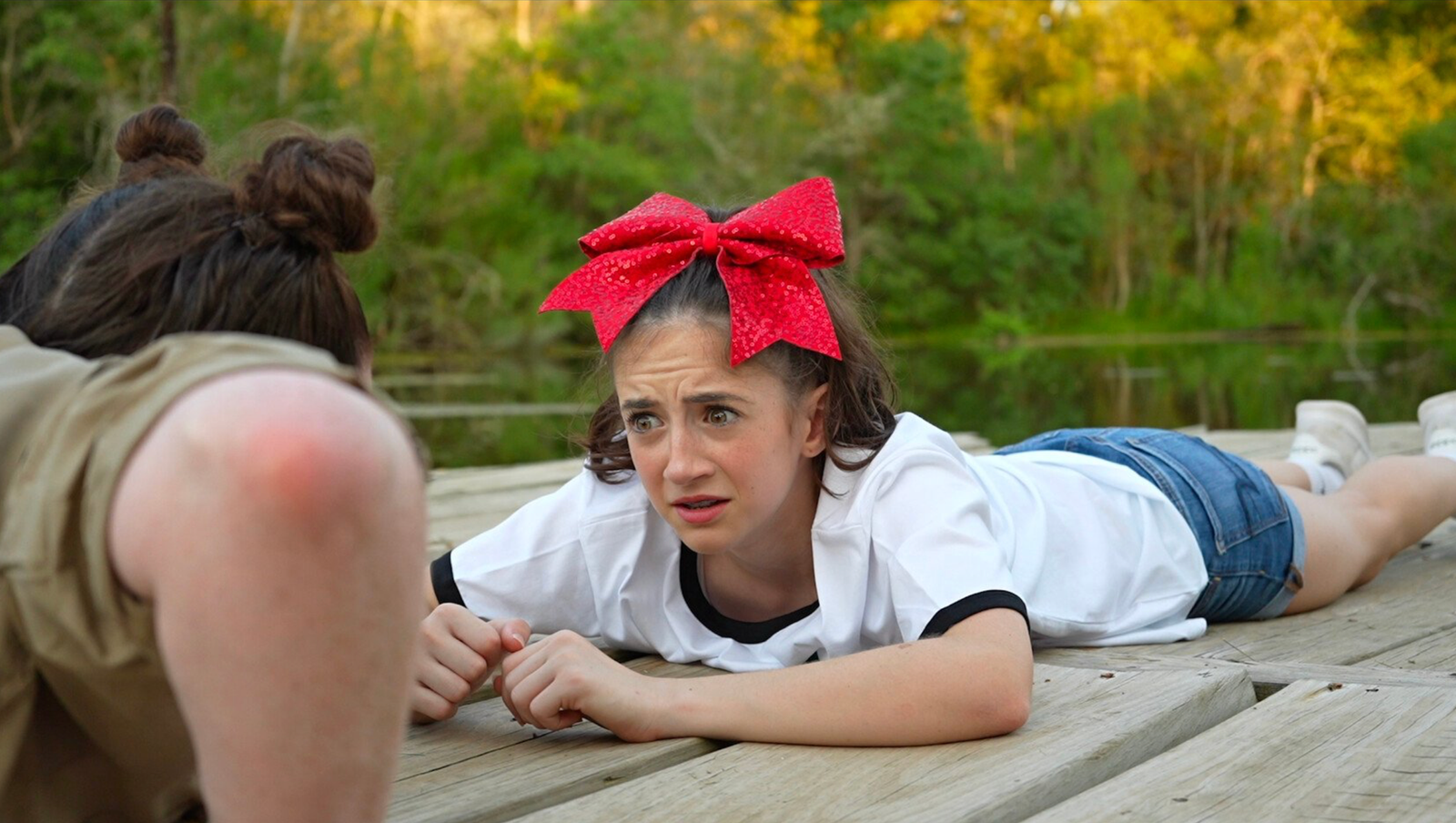
Darby Kingman’s “Camp Wackapoo: Rise of Glog” redefines summer camp comedy with a wild, energetic story about ambition, chaos, and the joy of embracing the unexpected. The film centers on a relentlessly competitive camp counselor who’s determined to finish first—only to face a motley crew of unruly campers and a summer unlike any other.
As Darby puts it, “Not everything is that deep. It really honestly was to make people laugh. She has all these kids that are not working with her and she’s just losing her mind. It’s crazy, silly, goofy, and it was a blast.”
What started as a simple scene for Darby’s acting reel evolved into a full-fledged film with encouragement from her mentor at Debbie Reynolds Acting School. Darby dove into every role—writing, directing, starring, and meticulously preparing each prop and costume. “Plan and prepare, but also be flexible and ready to be in the moment—that’s when the magic happens,” she advises.
Working with a handpicked cast of her own dance students, Darby built an atmosphere of real teamwork and camaraderie. She credits the “precious” energy of her young cast, her creative director of photography, and the overall spirit of her production team for turning the project into something bigger than herself. Her experience is an inspiring blueprint for indie filmmakers:
“Take initiative and control of your career. You can’t just sit around and wait for somebody to pick you. Figure out what you’re good at and go for it. Create something that brings joy to others.”
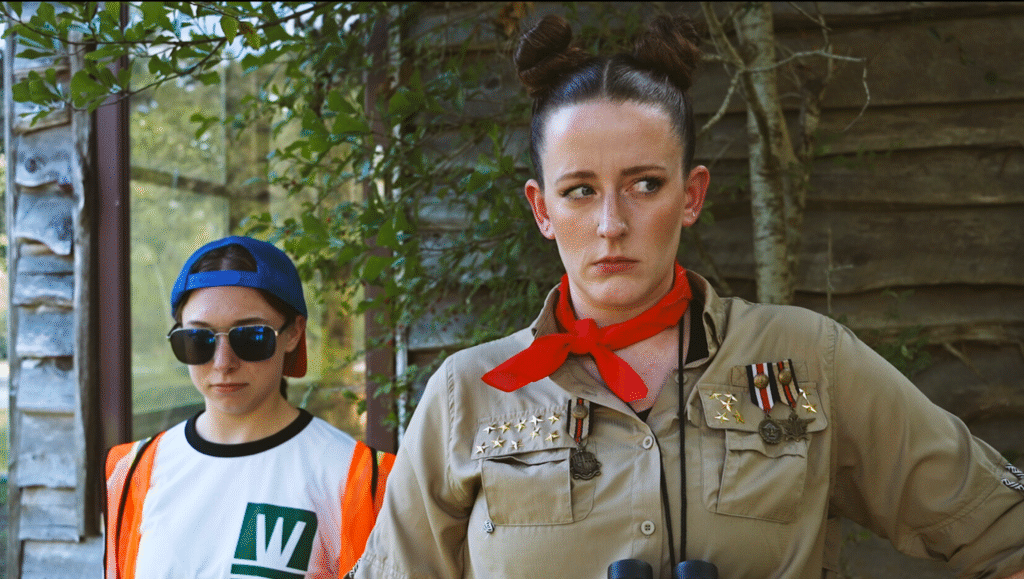
Her production motto? “Preparation is key, but you have to be ready to go with the flow—that’s when the magic happens.” Darby’s fearless creativity, focus on collaboration, and love for comedy shine throughout “Camp Wackapoo: Rise of Glog.” It’s more than just a camp satire—it’s a heartfelt testament to hard work, original humor, and leadership from the ground up: “People need to laugh right now. That’s a win.”
Catch “Camp Wackapoo: Rise of Glog” and experience Darby’s infectious energy and comic genius at the Deluxe Theatre on November 1, 2025. Get your tickets now at Houstoncomedyfilmfestival.com.
Entertainment
Diane Keaton Dies at 79
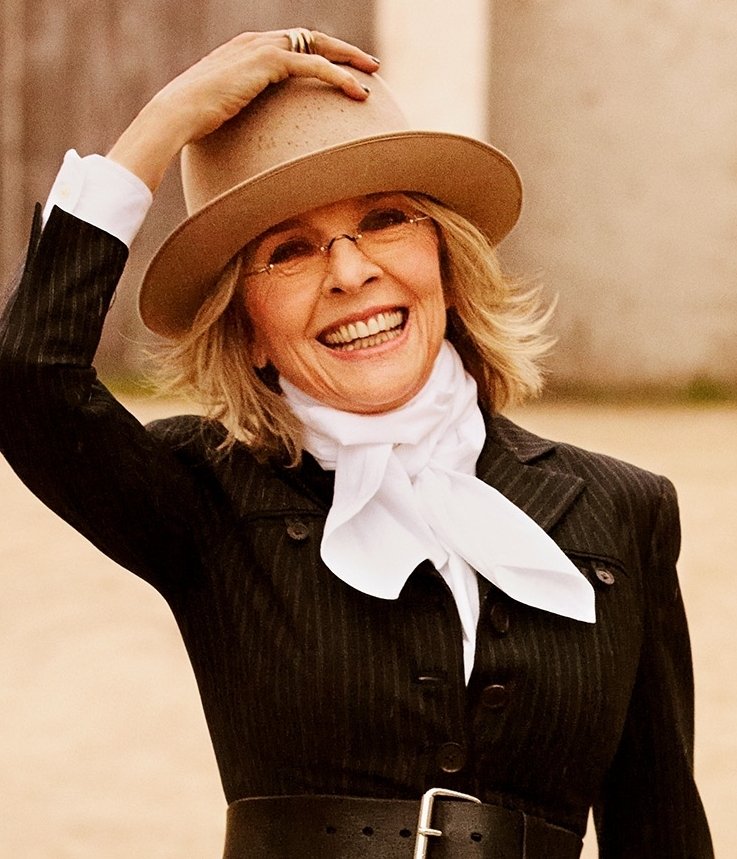
The world of film and entertainment is mourning the loss of Diane Keaton, an Oscar-winning actress renowned for her enduring talent, individuality, and influence on generations of performers and fans. Keaton died at the age of 79 in California on Saturday, October 11, 2025, her family confirmed. Details remain private, with her family requesting privacy as they grieve this profound loss.
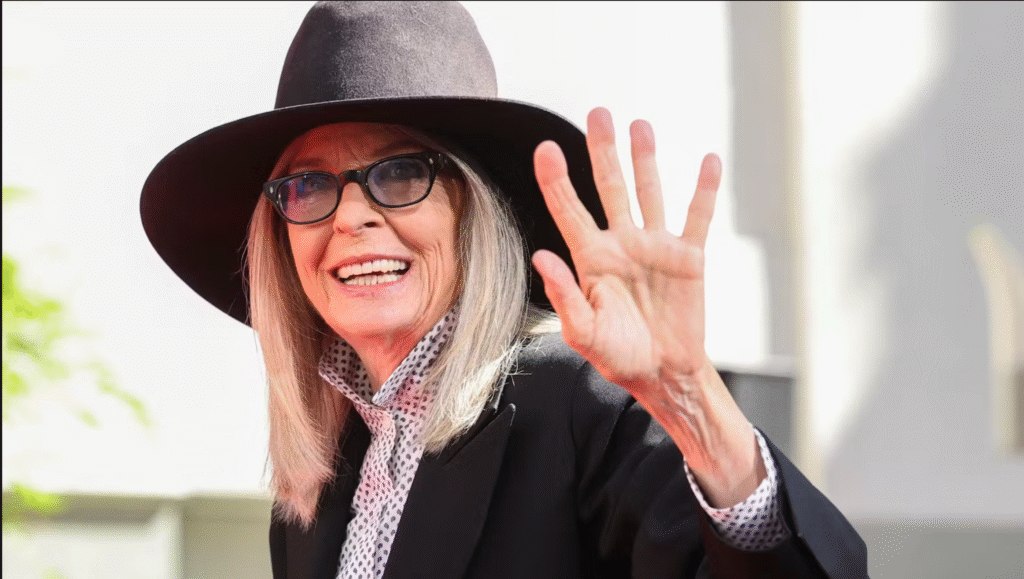
A Distinctive Talent
Diane Keaton rose to fame in the 1970s through a series of memorable roles, most notably as Kay Adams in “The Godfather” trilogy and as the quirky, unforgettable lead in Woody Allen’s “Annie Hall,” for which she won the Academy Award for Best Actress. Her performances in films like “The First Wives Club,” “Something’s Gotta Give,” and the “Book Club” series solidified her reputation as an actress with unique comedic timing and dramatic depth. Keaton was celebrated not only for her artistry but also for her androgynous fashion sense, characterized by menswear-inspired looks, hats, and an easy, effortless style that influenced generations.
Legacy and Tributes
Following the news of her passing, tributes poured in from Hollywood and beyond. Bette Midler, Goldie Hawn, and Jane Fonda were among the countless stars who expressed devastation and admiration for Keaton’s incomparable legacy. Hawn recalled their friendship and collaborations, writing: “Diane, we aren’t ready to lose you…you stole the hearts of the world and shared your genius with millions”. Midler echoed the sentiment, praising Keaton as “brilliant, beautiful, extraordinary” and a truly original presence in Hollywood.

Private Struggles and Final Months
Though fiercely independent and known for her openness, Keaton kept her declining health private in her final months. Friends and neighbors noticed her retreat from public life and social media, and she was recently seen less often in her Brentwood neighborhood. In the past, Keaton candidly discussed her ongoing battles with skin cancer and bulimia, openly advocating for personal health and authenticity.
Remembering Diane Keaton
Diane Keaton leaves behind a legacy defined by her fearless performances, unique style, and enduring influence on the arts. She is survived by her two children, Dexter and Duke. As Hollywood and her global fanbase mourn, her pioneering spirit and unmistakable voice will continue to inspire generations.

 Business3 weeks ago
Business3 weeks agoDisney Loses $3.87 Billion as Subscription Cancellations Surge After Kimmel Suspension

 Entertainment3 weeks ago
Entertainment3 weeks agoWhat the Deletion Frenzy Reveals in the David and Celeste Tragedy

 Entertainment4 weeks ago
Entertainment4 weeks agoABC Suspends ‘Jimmy Kimmel Live!’ Indefinitely After Kirk Remarks

 Entertainment3 weeks ago
Entertainment3 weeks agoExecutive Producer Debut: How Celia Carver Created Festival Hit ‘Afterparty’

 Film Industry4 weeks ago
Film Industry4 weeks agoCan Movie Theaters Steal the Show from Streaming?

 Health3 weeks ago
Health3 weeks agoRussia Claims 100% Success With New mRNA Cancer Vaccine

 News4 weeks ago
News4 weeks agoBody of Missing Teen Found in Tesla Linked to Musician D4vd

 Business4 weeks ago
Business4 weeks agoWhy Small Theaters Are Thriving While the Industry Struggles



















